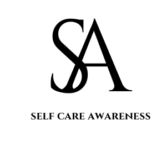
- Understanding a Nuclear Stress Test
- How Radiation Works in a Nuclear Stress Test
- How Long Does the Radiation Stay in Your Body?
- Safety Precautions after a Nuclear Stress Test
- Factors That Influence Radiation Clearance
- Tips to Minimize Radiation Exposure
- Radiation Exposure and Safety Considerations
- Possible Side Effects and When to Seek Help
Understanding a Nuclear Stress Test
A nuclear stress test is an essential diagnostic instrument used to evaluate myocardial perfusion. This examination aids in diagnosing disorders such as coronary artery disease (CAD) by employing a small amount of radioactive material (radiotracer) to provide intricate pictures of cardiac activity.
Numerous patients inquire, “What is the duration of radioactivity following a nuclear stress test” This article offers a thorough response, including information on radiation exposure, safety protocols, and strategies for minimizing radiation levels in the body.
How Radiation Works in a Nuclear Stress Test
A radiotracer such as Technetium-99m or Thallium-201 is administered intravenously during the examination. These isotopes release gamma radiation, enabling imaging instruments to obtain detailed heart images. The radiation dose from this test is negligible and akin to that of other medical imaging procedures, such as CT scans. The radioactive material has a half-life that dictates the rate of disintegration and elimination from the body.
Technetium-99m possesses a half-life of around six hours, but Thallium-201 exhibits a greater half-life of about 73 hours. Nonetheless, owing to normal metabolic processes, most radiation is eliminated from the body more rapidly than the half-life would indicate.
How Long Does the Radiation Stay in Your Body?
Most radiotracers utilized in a nuclear stress test are expelled from the body within 24 to 48 hours. The body inherently eliminates these chemicals by urination, perspiration, and defecation. Approximately 75% of the radiation dissipates within the initial 24 hours, and after 48 hours, the residual radiation levels are exceedingly low.
Safety Precautions after a Nuclear Stress Test
Patients frequently express concerns over the potential exposure of family members, especially pregnant women and small children, to radiation. Although the danger is negligible, it is advisable to maintain a distance from babies, pregnant women, and immunocompromised patients for around 24 hours. Consuming enough water can expedite the expulsion of radioactive substances, while regular urination aids in removing the radiotracer from your body.
Maintaining proper hygiene, including thoroughly washing hands after urine, is advisable. If you are nursing, your physician may recommend a temporary cessation, as certain radiotracers may be present in breast milk.
Factors That Influence Radiation Clearance
Multiple variables influence the rate at which your body expels radioactive substances. The radiotracer utilized is significant, as Technetium-99m is eliminated more rapidly than Thallium-201. The functionality of the kidneys and liver influences clearance since well-functioning organs facilitate the effective processing and elimination of the material.
Maintaining hydration enhances excretion, and an accelerated metabolism leads to swifter elimination. Light physical exercise, such as ambulation, can improve circulation and expedite elimination.
Tips to Minimize Radiation Exposure
Although the radiation from a nuclear stress test is minimal, implementing some procedures might further mitigate exposure. It is advantageous to maintain hydration by consuming a minimum of 8–10 glasses of water throughout the initial 24 hours. Frequent urination aids in the expulsion of the radiotracer from the body.
Although not inherently hazardous, restricting close contact with others is advisable on the initial day. Adhering to your physician’s directives guarantees that you undertake optimal measures based on your health status.
Radiation Exposure and Safety Considerations
The radiation dose during a nuclear stress test is very little and deemed safe. The typical dosage ranges from 9 to 12 millisieverts (mSv), comparable to a chest CT scan. The average individual encounters 3–6 mSv of natural background radiation each year from cosmic rays and radon gas sources.
Possible Side Effects and When to Seek Help
Most individuals encounter no notable adverse effects following a nuclear stress test; infrequent minor responses may arise. Some individuals experience weariness, dizziness, moderate nausea, or a sensation of flushing. Allergic reactions may occur infrequently. Obtaining medical counsel without delay is essential if you encounter severe symptoms or atypical discomfort.
Conclusion
Following a nuclear stress test, your body will exhibit minor radioactivity for around 24 to 48 hours, most of the radiation dissipating during the initial day. Adhering to basic safety measures—such as hydrating, peeing regularly, and reducing extended close contact—can facilitate the rapid and efficient removal of any remaining radiation.
Comprehending the transient nature of radiation exposure will alleviate apprehensions and enable you to concentrate on your well-being. For any particular concerns, please seek customized advice from your physician.
